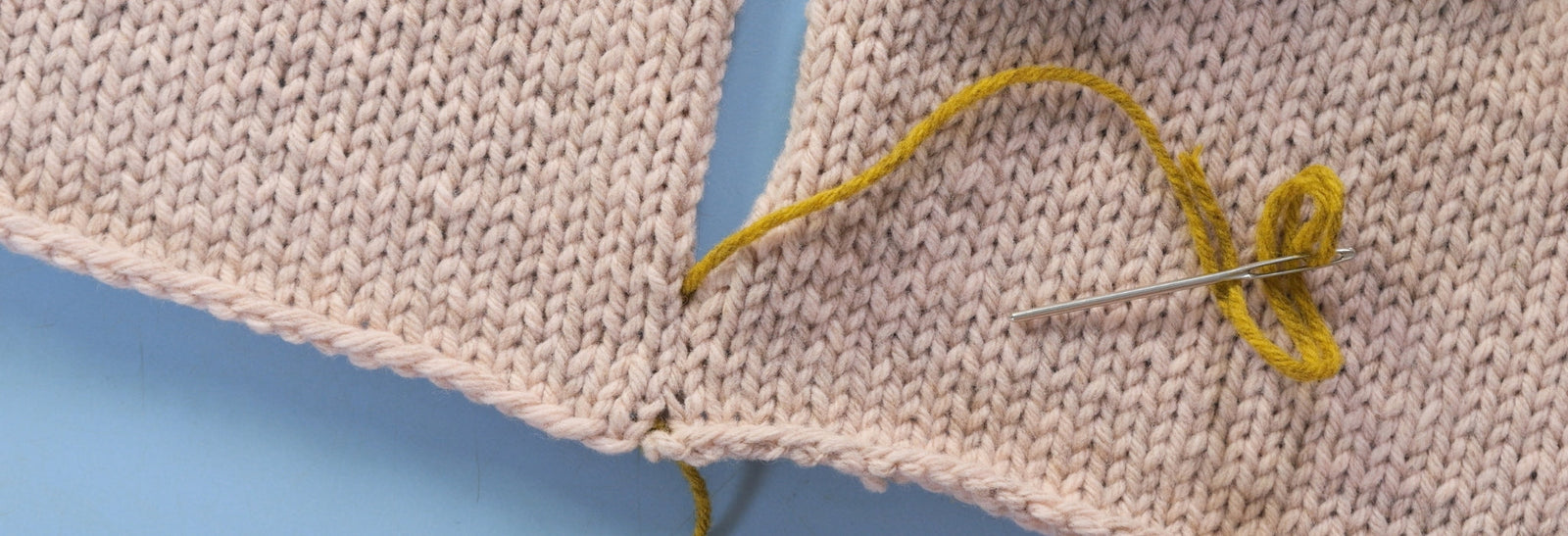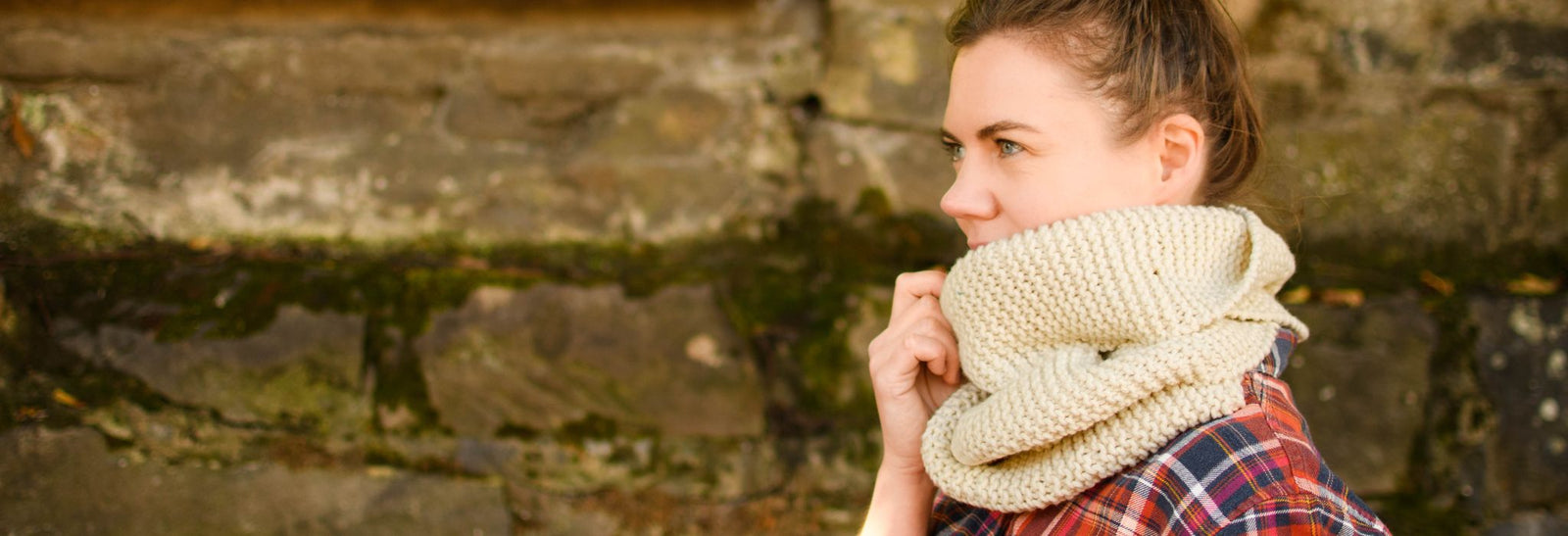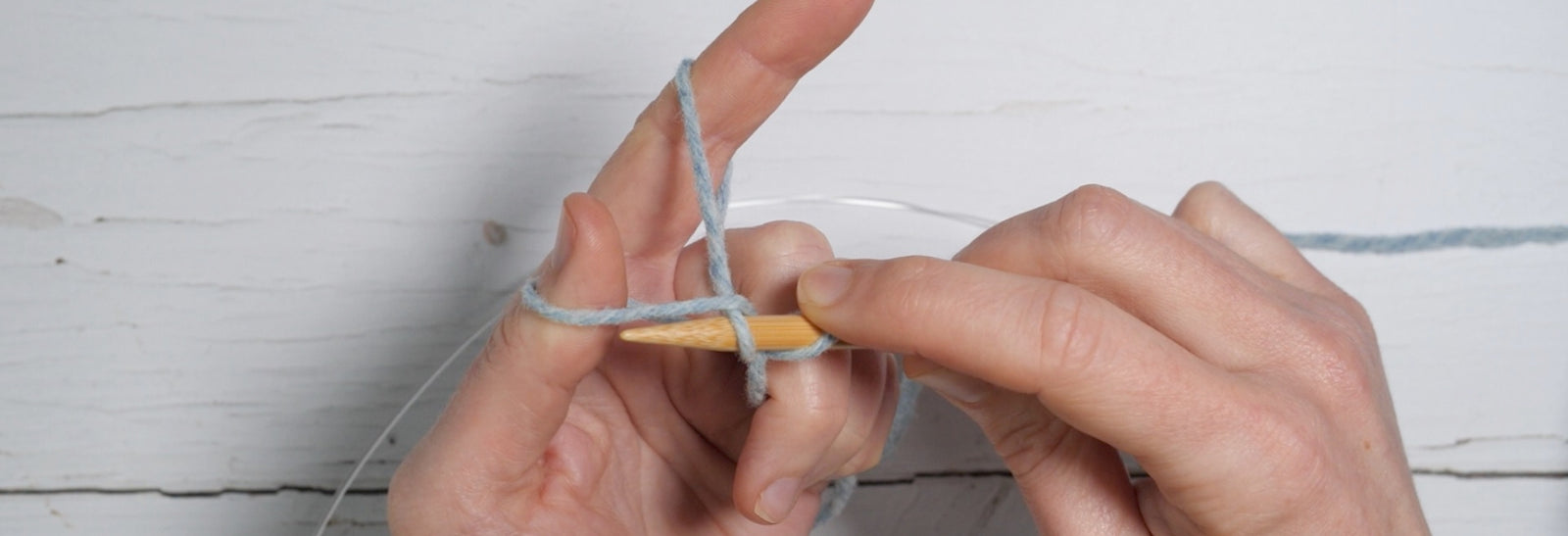Your Cart is Empty

How to buy yarn online
March 05, 2021
Are you new to buying yarn online? If you're new to knitting there are few things to consider when making your first online yarn purchase. Our guide gives tips on budgeting for your yarn shopping, how to choose which yarn to buy for your project, and advice on how to get to know your beautiful yarn when it arrives.
As knitters ourselves, the Ysolda studio team love helping other makers to find their perfect yarn. Sharing knowledge about knitting and yarn is what really keeps us creating as a business! Our regular contributor Nidhi offered to share her tips on how to make buying yarn online an exciting thing, rather than something people are often nervous about. - Ysolda
When one has limited accessibility to brick and mortar yarn stores, one gets used to shopping online. I live in Mumbai, on the west coast of India. Given our warm climate, knitting is understandably a rare craft and acrylic is the most commonly available fibre in the city. In fact, in my early years if I asked for wool, acrylic is what I got and I truly believed it came from sheep. Needless to say, fibre events are almost non-existent, and meeting unexpectedly with a total stranger who happens to be a knitter is a thing to celebrate.
I do believe it’s a luxury to be able to visit a store that stocks all your dream fibres, to interact with people at retreats and events, discuss new design releases and most of all touch and feel all that gorgeous yarn before you pay for them. What do you do when you don’t have that option?
Fortunately the internet has opened up the world to us and now we have the entire shopping experience at our fingertips. The biggest advantage to online shopping is that we now have access to big yarn stores as well as small indie dyers across the globe and we can pore over their online homes to our hearts’ content and keep filling up our virtual carts.
Caution: Endless hours may be lost while gaping at pretty yarn.

Budgeting For Online Purchases
It’s always good to start with a budget.... not just for the yarn of course, but the accompanying costs. A key area where my cost could go up is shipping and customs duties. Yarn stores in Europe and the UK are a more economical choice for me. For access to the rest of the world, I wait impatiently for indulgent friends and family to bring me yarns on their visits to India.
Since shipping costs are mostly calculated based on the weight of purchased items, this could be a critical factor in deciding whether you want to add that extra skein of yarn or not. Websites like this one have a free shipping option once your order meets a certain limit which makes it worthwhile to spend more on yarn while saving on shipping.
It is important to check your domestic customs policy though! Some countries like mine also apply a customs duty on international packages, so it’s critical that I factor in all of these costs. I have had some experience sadly, in placing orders that qualified for free shipping, only to end up paying a heavy customs fee on delivery.
It can also helpful to check for return policies that a store might have but if you live as far away as I do, it’s best to put in some extra time and effort and get that yarn selection right the first time round. Lastly, always check yardage for a project. The difference of even one skein from total yardage could be the difference between being stuck on the second sleeve without enough yarn or a moderate shipping cost!
How To Choose Yarn Online
It’s easy if I’m looking to buy yarn for a particular project, say a cozy colourwork hat like Bellfield. I can look up details on the pattern page, place an order online for the suggested yarn and can rest assured that my project will pretty much work up like that shown in the sample photograph.
What if I wish to substitute yarns or maybe just try out new fibres or brands? How do I ensure the yarn I add to my cart is actually something I will enjoy working with?
Firstly, I try to gather as much information as I can about the yarn before I hit ‘pay’. The bigger and more popular a brand, the easier it is to purchase with confidence. Stores around the world will stock them, and a basic search on the internet will throw up projects made with said yarn, interesting blog posts by makers who have used them and so on. The lesser known brands on the other hand, will require some more digging.
One easy way is to look up yarn reviews on the website itself. For example, if I wanted to purchase a sweater quantity’s worth of Gilliatt from Ysolda, I find not only the relevant information on the page, but also user reviews that are helpful to me. Reading about the lightness of a worsted weight yarn, or the beautiful stitch definition while working texture helps me better visualise the finished sample. I particularly appreciate reviews that mention if a fibre is suitable keeping allergies or sensitive skin in mind.
Useful Websites to Research Your Yarn
Ravelry.com is one website I turn to often before making a yarn purchase. This site has considerable information added by makers themselves to their project and pattern pages, that one can refer to as a guide.
For starters, I can look at all the Ravelry projects made with Gilliatt. These can further be filtered based on the most commonly used needle sizes. From this I get an idea of whether the fabric works up drapey or dense. I can see how it looks worked up in different textures like lace or cables, and even read project notes wherein there are helpful reviews about what they liked or disliked about a particular yarn.
To help me with colour choices, I can also search for a specific colourway on Ravelry and see how it looks when photographed by other users for as true a colour depiction as possible, since screen differences and photography lights often alter shades considerably.
There’s also yarnsub.com, a free and independent tool to help knitters and crocheters find workable substitutes for discontinued or hard to find yarns. It has a large database of current and discontinued yarns that you can browse directly or search with the custom-built search engine for characteristics such as fiber or weight. You could use it to find similar yarns that you might be more familiar with.
A word of caution about colour....
Despite all the research, things can still get missed. I once ordered a yarn that I was sure would be a gorgeous peacock blue but it turned out to be a really dark green and greens are so not my favourite colour. It was not serious enough to consider returning, but one is left feeling a little deflated. The yarn was perfect to work with and I got a lovely bias scarf out of it.
It’s always worth remembering that screen colours can vary, dye lots can change, I have even filtered out projects by year so I get to see the most recent shade of the dye. Yes, I’m clearly a case of once bitten, twice shy! Which really makes me appreciate the fact that Ysolda has a 28 day return period if the colour you chose looks different in hand from what you saw on screen. I think that’s truly a considerate element in a return policy.
If in doubt at any time while making an online purchase, make sure to reach out via the relevant contact info on the website.

I like what I see but will I like it when I put yarn to needles?
It’s always exciting to try out new yarns for the first time; you just want to sniff them and squish them, you’re torn between wanting to keep those pretty skeins just as they are and winding them up so you can get knitting! The excitement...no, the thrill really, is more so when they’re purchased off the internet based only on the pictures on display and some basic information accompanying the picture like yarn weight and yardage.
It must be clear by now that I can easily spend hours combing through the internet for the right fiber with the right shade. I can load up my cart fast enough, but there’s always a bit of nervous excitement because I haven’t touched the yarn yet! Will it really work for me? Better yet, will it work with me – transform what is so far only in my imagination into something that I can hold in my hands and love?
This is one of the reasons I opt for hand winding my yarn. For me the journey of designing or even knitting begins with this step. A slow yet meditative process of winding a hank or skein by hand is my first introduction to the fibre I’m going to be working with, where I can feel it run through my fingers and get an idea of how it behaves. Is it stretchy, will it be soft when draped around my neck, can it showcase a simple lace pattern? Will it hold texture and define cables and twisted stitches, and finally... what do I really want it to become – something warm and cozy like a textured wrap, or a simple lacy stole to throw on as an accessory, or will it be my comfy boxy pullover that I’d want to spend all my days in?
The ultimate test of the yarn of course is when I begin to knit with it. By this time I already have an idea of what I want to make with it, but now to verify it with a trusty pair of needles. A few swatches and some good old blocking will tell me soon enough if I have a winner on my hands. Swatching, and getting to know a yarn will help you to understand more about the yarns you buy in future. It's such a vital step in understanding your materials, and on the blog you can find free tutorials on swatching in the round, how to swatch for a sweater and how to swatch in pattern.
We love to hear about your experiences too - have you any tips you can share on buying yarn online?
Also in Journal

Learn to Knit: Mattress Stitch
March 29, 2023
By following our step-by-step mattress stitch knitting tutorial, you'll learn how to make your seams look beautiful and how best to prepare your knitting so that when you seam it with mattress stitch, it goes smoothly on the first try.
Read More
How to Knit a Scarf: A Beginners Guide to Scarf Knitting
March 23, 2023
Want a quick and easy beginners tutorial on how to knit a scarf? This garter stitch scarf is easy to knit and requires just 3 skills; casting on, the knit stitch and casting off.
Read More
Learn to knit: the long tail cast-on
February 03, 2022
The long tail cast on is a great multi-purpose knitting cast on and the perfect place for beginner knitters to start. Learn how to work the long tail cast on and how to estimate the length of yarn needed with our clear step by step tutorial and video.
Read More Recent Articles
- Learn to Knit: Mattress Stitch March 29, 2023
- How to Knit a Scarf: A Beginners Guide to Scarf Knitting March 23, 2023
- Learn to knit: the long tail cast-on February 03, 2022
- How to Kitchener Stitch December 09, 2021
- Crochet Provisional Cast-on December 02, 2021
- Learn to knit: How to knit in the round with double pointed needles November 25, 2021
- Learn to knit: How to knit in the round using the magic loop technique November 25, 2021
- Learn to knit: How to knit in the round November 25, 2021
- Knitted Gift Ideas for you and your loved ones November 18, 2021
- Celebrating our Porty Hat Preview Knitters October 28, 2021
Free resources
-
KALS, step-by-step pattern guides and free patterns
Learn brioche with the free Daniel's Hat pattern
Tombreck - a free chevron beanie pattern
Working the brioche neck detail on the Polwarth sweater
Basics
Casting on
Decorative Channel Island Cast-on
Binding off
3 Easy Stretchy Bind-offs (p2tog bind-off; k2togtbl, k1 bind-off; Jeny's surprisingly stretchy bind-off)
Tubular Bind-off for brioche stitch
Increasing
Paired increase methods compared
Decreasing
Brioche stitch double decreases
Knitting in the round
How to Knit in the round using Magic Loop
How to Knit in the round using DPNs
Short rows
Swatching and gauge
Tips and tricks
Avoiding ears when binding off
Tighter purl stitches for neater cables and ribbing
Cabling without a cable needle
Reading knitting patterns
Understanding "continue in pattern"
Finishing
Garment knitting
Joining the body and sleeves on a seamless bottom up sweater
Sizing
Inclusive garment knitting
How to pick a garment without a model for you (specifically addresses finding garment patterns when your gender identity isn't represented and the styles you want to knit might not be sized to fit your body)
How does ease affect inclusive size ranges?
Specific stitch patterns
Lace
Identifying and fixing mistakes in lace knitting
Colourwork
Getting started with stranded colourwork
Understanding colour dominance
Working stranded colourwork over small circumferences
Decreases in stranded colourwork
Holding the yarn for stranded colourwork
Ladderback Jacquard (a neat way to deal with long floats)
Cables
Cabling without a cable needle
Cabling without a cable needle on the wrong side
How to knit cabled decreases
Closed ring cable increases and decreasesBrioche
How to work brioche stitch in the round
Other crafts
Cross stitch
How to begin your first large cross stitch project
How to finish a cross stitch project with an embroidery hoop frame
Mending

Sign up today
Find out the latest news from the studio such as sales, pattern releases, and new workshops or KALs our learning community, The Knitwork. We also share helpful tips and exclusive subscriber discounts...

